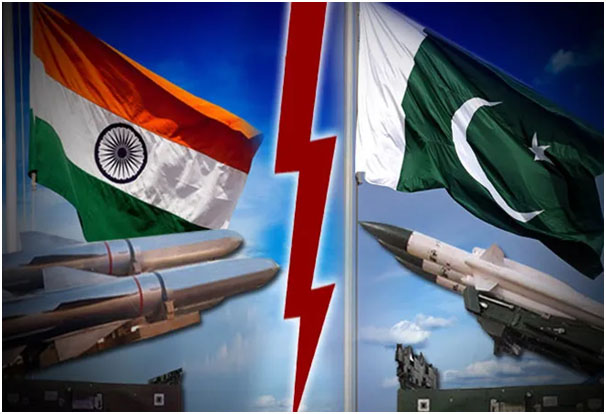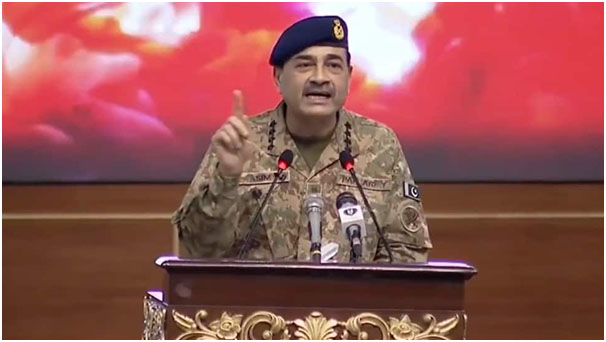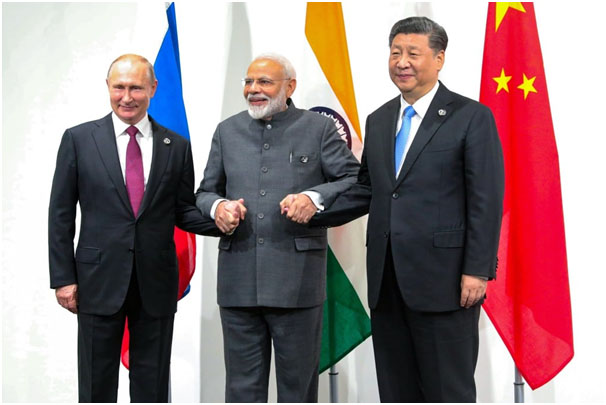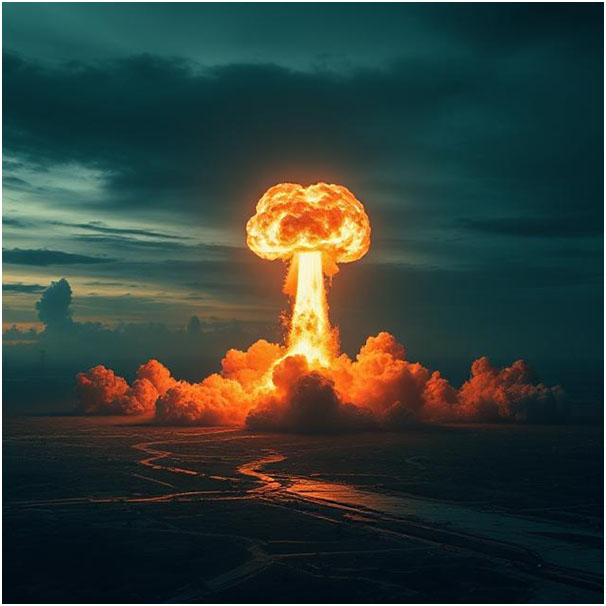The public warmth between President Donald Trump and Pakistan’s Army Chief General Asim Munir is not diplomatic theatre. It is the outward face of a calculated alignment that, if sustained, could shift the balance of South Asia’s strategic game. Munir’s sudden barrage of aggressive rhetoric, from nuclear threats to targeting India’s dams and refineries, alongside the banning of the Balochistan Liberation Army, is not a random show of force. It is part of a joint political and military script with Washington’s covert playbook. In Donald Trump’s return to the world stage, his warm embrace of Pakistan’s Army Chief General Asim Munir is not an act of nostalgia but a deliberate choice to unleash a willing disruptor on India’s strategic flank at a moment when the balance of power in South Asia is already in flux.
The timing is not coincidental. Trump, whose political stock is being questioned in America, has always favoured transactional arrangements over structured alliances. His return as POTUS brings back an older instinct: to lean on Pakistan as a flexible, low-cost tool for advancing US interests in the region. Pakistan under FM Munir offers him a willing partner, one that can complicate India’s strategic environment, manage elements of Afghanistan policy, and keep China guessing, all without the binding commitments that India demands.
For Failed Marshall Munir, the embrace is pure currency and a ray of hope for a regime change, alias coup and his ambition to wear the crown. It confers international legitimacy on a military establishment facing economic ruin at home, a credibility gap with Beijing, and lingering humiliation after Operation Sindoor. That Indian military operation did more than strike Pakistan with precision; it exposed the weaknesses of its mixed Chinese and US-origin military inventory. This irked Trump and his arms lobby when the S-400 dropped F-16 and AEWS&C aircraft. Conversely, the Russian-supplied platforms and weaponry used and synergised through a three-service approach by India yielded consistent and effective results during operations. The message was quite clear; cracks were emerging in the deterrence posture of Pakistan, and India knew where to hit it.

Munir’s nuclear sabre-rattling, including the veiled threat to hit strategic dams and refineries, is a calculated distraction from this reality. It plays to a domestic audience conditioned to equate bluster with strength. It also serves as a signal to Washington that Pakistan can still inject volatility into the region, a useful asset for Trump’s brand of high-pressure diplomacy. By reviving the nuclear threat narrative, Munir seeks to regain leverage in a contest where conventional parity is slipping away and once again internationalise the core Kashmir issue. Trump’s greed for a self-nominated Nobel Prize fits into the illusion of mediation, where India will never relent.
The banning of the Balochistan Liberation Army adds another layer to this choreography. Presented as a counterterrorism measure, albeit for an undeclared terrorist state, it also functions as a bargaining chip. For the United States, it placates concerns over energy corridor security in the Arabian Sea. For China, it addresses threats to the China–Pakistan Economic Corridor. For Munir, it is a way to position Pakistan as a cooperative partner to both Beijing and Washington at once, extracting diplomatic value from a domestic security decision.
But the alignment between Trump and Munir is not happening in a vacuum. It is unfolding against a backdrop of shifting global alignments that increasingly dilute US leverage over India. The Russia–India–China (RIC) trilateral, though often fraught with competing interests, provides India with a strategic cushion outside Washington’s orbit. BRICS, now expanded to include major oil and gas economies and influential emerging states, is maturing into a platform that challenges Western-led economic frameworks. The Quad, by contrast, has struggled to move beyond security signalling and is more of a kitty party, leaving it with less immediate economic or political traction in the developing world.
This reality is one reason why Trump may be reactivating the Pakistan option. For Washington, a confident, multi-aligned India is far harder to pressure into a singular Indo-Pacific containment strategy against China. By drawing closer to Munir, Trump signals that the United States retains ways to unsettle India’s periphery and strategic calculus. Tariff measures on Indian exports under Trump’s watch were more than trade posturing; they were reminders that Washington’s economic toolkit can be deployed alongside its regional security playbook.
The danger here lies not only in the revival of an old pattern but in its modern packaging. Munir’s nuclear provocations are amplified through a global information environment that is faster, more polarised, and more prone to escalation than at any point in the past. In such an environment, deterrence missteps can spiral quickly – that is Pakistan’s narrative. The more Washington indulges this rhetoric for tactical gain, the more it normalises nuclear brinkmanship as a tool of routine political messaging.
For India, the lessons from Operation Sindoor remain relevant. Deterrence does not originate in stockpiles of weapons, but it spills over to the plausibility of political will, capability of military operations and the domination of the cognitive space through strategic communication. Sindoor proved that India can strike across the depth of Pakistan with speed, coordination, and accuracy. It also demonstrated that India’s ability to integrate Russian-origin systems with indigenous command and intelligence capabilities gives it a resilient edge. Yet the narrative, particularly for an international audience, remained weak and needs more traction in future.
That operational credibility must now be matched with strategic patience. Pakistan’s provocation cycle under Munir is designed to draw India into a reactive posture, one where it expends diplomatic and political energy countering every rhetorical threat. Instead, India ought to use BRICS and RIC commitments to gain access to greater economic and political partnerships, thereby cushioning its vested interests against volatility in the Washington home. Meanwhile, India needs to expose the risks of nuclear blackmail by a rogue terror state, Pakistan, at the international forums. A review of the NFU in India’s nuclear policy also needs a strategic discourse. If an act of terror =threat of war, then a threat of a pre-emptive strike (reminder of the Kinara Hills – Black mountains must be an indication of Indian pre-emptive capability)
The Trump–Munir convergence is not an alliance of equals; it is a temporary alignment of convenience. Trump sees Pakistan as a disruptor at low cost. Munir sees Trump as a shield for his military’s strategic insecurities. Such relationships are inherently unstable. But their short-term consequences can still be damaging if India underestimates the tactical coordination at play.
In the months ahead, India’s task will be to hold its strategic ground while denying the Trump–Munir axis the ability to set the tempo of engagement. That means strengthening indigenous defence modernisation, diversifying export markets to reduce tariff vulnerability, and continuing to build influence in multilateral platforms that the United States does not control. It also means signalling without ambiguity that nuclear blackmail will not deter India from defending its interests.
The currents in global geopolitics are shifting toward a more multipolar or rather heteropolar reality. In such an environment, transactional partnerships like the one emerging between Trump and Munir will come and go. What will endure is the advantage held by states that combine strategic autonomy with operational credibility. India’s challenge is not to out-bluster Munir or out-manoeuvre Trump in the short term, but to make itself immune to the leverage both are trying to create and make their rhetoric irrelevant.
1. Munir signals a calculated effort to destabilize India’s regional dominance, leveraging Pakistan’s military provocations and nuclear threats as tools to influence South Asia’s evolving strategic landscape.

2. Munir’s Provocative Rhetoric: Munir’s nuclear threats and targeting Indian infrastructure serve domestic and international political aims, aiming to regain legitimacy amid Pakistan’s economic struggles, military weaknesses, and regional tensions, while signaling volatility that can be exploited by external powers.

3. Regional Power Dynamics: Shifting global alliances like BRICS and RIC weaken US influence over India, encouraging India to diversify partnerships, modernize defenses, and strengthen multilateral ties—building strategic resilience against unstable US-Pakistan alignments and regional provocations.

4. Risks of Nuclear Brinkmanship: Munir’s nuclear saber-rattling, amplified through global information channels, increases escalation risks. Inducing deterrence instability, it underscores the importance for India to enhance operational credibility, strategic patience, and diplomatic efforts to prevent miscalculations.
ABOUT THE AUTHOR
 Lieutenant General A B Shivane, is the former Strike Corps Commander and Director General of Mechanised Forces. As a scholar warrior, he has authored over 200 publications on national security and matters defence, besides four books and is an internationally renowned keynote speaker. The General was a Consultant to the Ministry of Defence (Ordnance Factory Board) post-superannuation. He was the Distinguished Fellow and held COAS Chair of Excellence at the Centre for Land Warfare Studies 2021 2022. He is also the Senior Advisor Board Member to several organisations and Think Tanks.
Lieutenant General A B Shivane, is the former Strike Corps Commander and Director General of Mechanised Forces. As a scholar warrior, he has authored over 200 publications on national security and matters defence, besides four books and is an internationally renowned keynote speaker. The General was a Consultant to the Ministry of Defence (Ordnance Factory Board) post-superannuation. He was the Distinguished Fellow and held COAS Chair of Excellence at the Centre for Land Warfare Studies 2021 2022. He is also the Senior Advisor Board Member to several organisations and Think Tanks.








